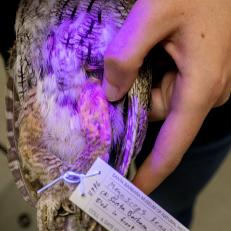Happy International Sloth Day!
We're going to go out on a limb and assume you're familiar with this slow animal. Beloved for their smiling faces, sloths are native to the tropical rainforests of South and Central America.
Hang in there... we've rounded up our top 10 fun facts about sloths to celebrate this International Sloth Day (October 20).
Sloths are the slowest mammals on the planet.
Sloths rarely travel more than 125 feet per day. At ground level, sloths crawl at a rate of 1 foot/ minute.
Sloths are three times stronger than humans.
From birth sloths can lift their entire bodyweight upwards with just one arm! With incredible grip strength, sloths are able to perform incredible acrobatic feats (albeit veryyy slowly).
Sloths are legally blind.
Sloths are blind in bright daylight. These slow animals have rod monochromacy, a rare condition that means they lack cone cells in their eyes. Because of this sloths are colorblind, and can only see very poorly in dim lighting. Luckily, sloths incredible sense of smell more than makes up for this.
Sloths can fall 100 feet without getting hurt.
Sloths are literally designed to fall out of trees. Anatomically, sloths bodies are built to survive a 100 foot plummet without injury. On average, a sloth will fall out of a tree once a week for its entire life. When two male sloths fight over a female for mating the aim is to knock their opponent out of the tree.
It takes sloths 30 days to digest 1 leaf.
With the lowest metabolic rate of any mammal, sloths take a long time to digest just about anything. Their large, four-chambered stomachs are similar to that of a cow, and allow sloths to digest hard-to-break-down leaves.
Ancient sloths were the size of elephants.
Today, sloths are about the size of a dog. But ancient sloths, known as Megatherium, could grow to be the same size as Asian elephants. Unfortunately, they went extinct around 10,000 years ago.
Sloths are strong swimmers.
Sloths move three times faster in water than they do on land. They can even hold their breath for up to 40 minutes!
Sloths give birth hanging upside down.
Other sloths aid in cleaning the infant and holding it so it doesn't fall.
Sloths can turn their head on a 270 degree axis.
Sloths have an extra vertebrae on their neck which allows them to get a full view of their surroundings. A very helpful defense mechanism for this languid creature.
Sloths spend 90% of their lives hanging upside down.
This is due to sloths' impressive biology. Their organs are attached to their ribcage which allows them to hang upside down for extended periods without their organs weighing down their lungs or affecting their breathing.
























